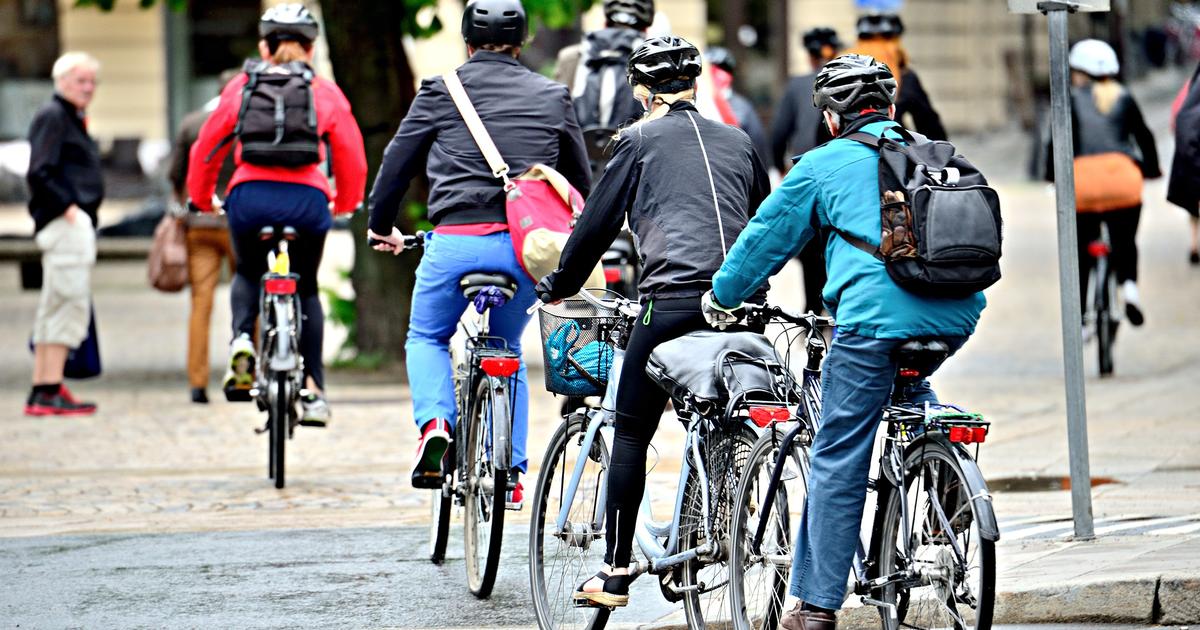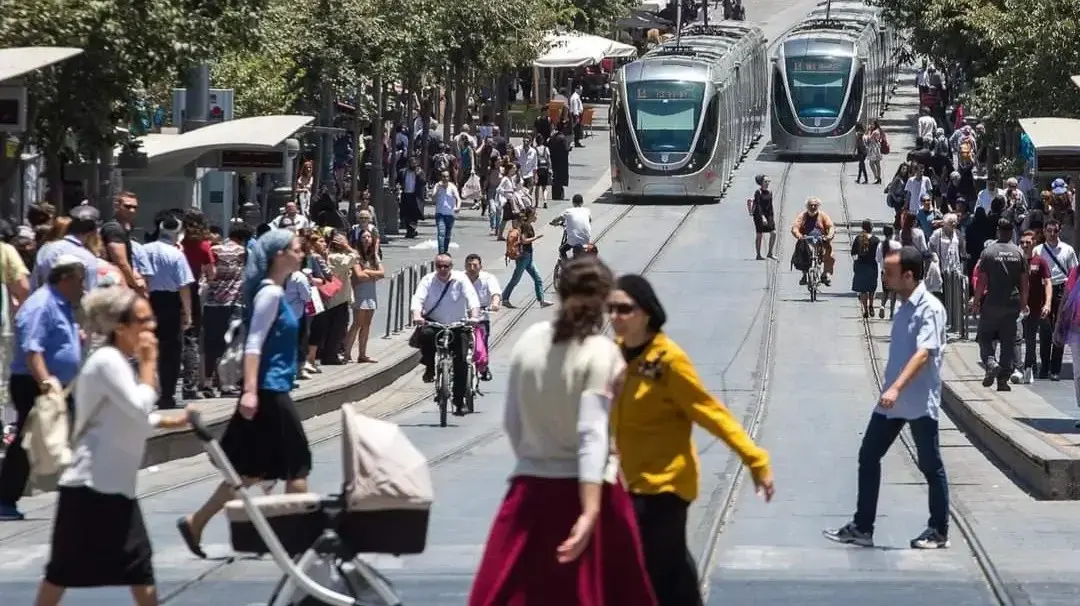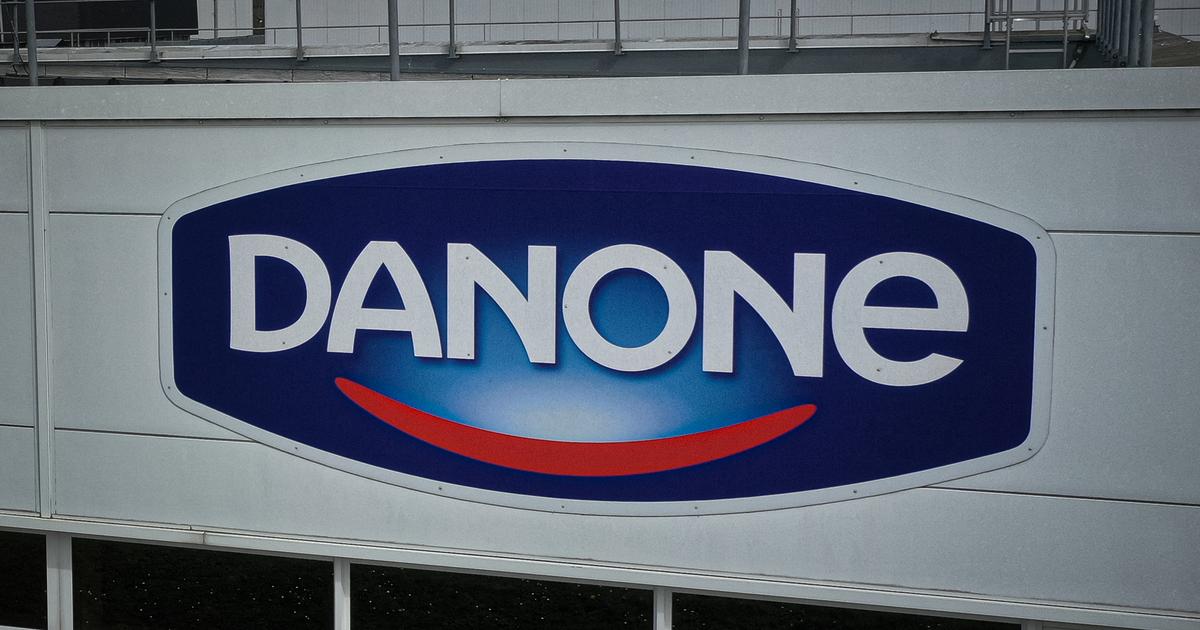Icon: enlarge
Concrete block in the superblock: reclaiming space from the car for other road users
Photo: Thiago Prudêncio / SOPA Images / LightRocket via Getty Images
In the morning, half past nine in Barcelona on Calle Valencia, the usual traffic jam at rush hour: Cars move forward meter by meter, it takes time.
Sure, there are now only two lanes left for cars instead of three: A yellow bicycle lane now runs on the right, the bus lane on the left, and the wide sidewalk next to it.
More space so that the corona distance of 1.50 meters can be maintained.
Pop-up cycle paths and sidewalks have emerged not only here, in Calle Valencia, but throughout the city in recent months: 30,000 square meters more for pedestrians, around 20 kilometers of new cycle paths, 60 side streets that have been closed to car traffic, so the interim balance of the city in Corona autumn 2020.
The local government has also used the past few months for the green renovation of Barcelona.
Not a reaction to the corona crisis, but a program: With the slogan "Omplim de vida els carrers", "Let us fill the streets with life", activist Ada Colau, recently elected mayor, had a young team of environmentally conscious politicians and city planners in the summer of 2015 used.
Their goal: to recapture public space from car traffic.
Super islands in the urban jungle
That was urgently needed back then: the north-eastern Spanish metropolis, which has become a magnet for tourists, has been suffering from high levels of air pollution and noise for years.
Each resident has an average of only 6.6 square meters of green space available, in the inner city districts even only 1.85 - while the WHO recommends at least nine square meters per capita.
The pollutant limit values set throughout Europe are regularly exceeded in Barcelona as well as in Madrid.
That is why the European Union has long threatened Spain with proceedings before the European Court of Justice and heavy penalties.
The new town hall team in Barcelona therefore decided early on to set up so-called "Superilles".
The Catalans call their traffic calming system "super islands".
Two by two or three by three blocks of houses are combined into one superblock.
The cars drive around the outside.
But only residents and delivery vans are allowed in at set times, maximum speed 10 km / h.
The city administration in Poblenou approved the first such superblock, and it has been in place since 2017.
The former working-class district in the shadow of the Torre Agbar waterworks tower, which towers like a gigantic rocket, was the heart of the Catalan city of Manchester in the 19th century.
It has been transformed into an e-city since the 2000s.
More and more old brick buildings have been restored or demolished, and instead of textile companies, start-ups and university faculties have moved in.
In addition to iconic buildings by international star architects, a few residential buildings were built.
The new ways of cars
Does the concept work?
To answer the question, a SPIEGEL team evaluated data from the navigation provider TomTom.
They show in detail how car traffic has changed.
Where does it accumulate?
Do people switch to other streets?
Has the total number of cars decreased or increased?
In the analysis of the Poblenou superblock, measurement data from 2016, i.e. before the block was opened, were compared with those from 2018.
The result: In Poublenou it is easy to see that traffic has shifted to Calle de Tanger, which runs to the north, and Calle de Pallars, to the south.
Hardly anything has changed on the perpendicular roads between northwest and southeast - but there aren't even half as many cars in this direction.
There is hardly any traffic within the superblock.
There are only a few cyclists and many students on foot, they have priority here.
The number of infections is still high in the city, more than 4,000 cases per day in Catalonia alone.
As has been the case for months, it is mandatory to wear a mask everywhere, in shops and restaurants, on the street.
Nevertheless, the quarter is lively, normal everyday life, only with a mask.
At the intersections of Carrer Sancho de Ávila, circular playgrounds protected with wooden fences have been created.
New rules, new battles
But on a nearby skyscraper that borders Roc Boronat, one of the thoroughfares, there is a protest banner: "No Superilla" is written on it, "the neighbors want to have a say".
"Yes, initially there were a lot of doubts, especially from shopkeepers and local residents," says Xavi Matilla, 44, chief architect of the Barcelona city council.
He has a good view of the superblock from his office on the outskirts of Poblenou.
In the meantime everyone wanted to live inside a superilla: "We have petitions from all over Barcelona, this is very popular now".
Poblenou was the pilot project, even though the area has always had little traffic.
Matilla says the experience was necessary to better implement the innovative concept elsewhere.
"We had already learned the lesson at the Superilla around the Sant Antoni market and better involved the local residents."
The superblock has been finished there since last October.
Here, too, the TomTom data show that car traffic has fallen sharply, in the now closed Calle del Conde Borrell to only 15 percent.
Instead, twice as many cars roll through the parallel street, Calle de Viladomat, as in 2016. There, but only there, the average speed fell by 10 to 15 percent.
According to TomTom data, practically nothing has changed in the remaining streets near the superblock.
The example of Sankt Antoni shows: the traffic does not collapse because of a super villa, the effects are minor.
More than 500 new seats have been set up in the blocked-off streets, people meet and play chess.
But they still have to get used to the rules in the superblock, says a policewoman who patrols the market hall with a colleague in orange vests, clearly visible.
Electric scooters and motorcycles would often ignore the speed limit or, for short, simply cross the yellow markings on the ground that demarcate children's play areas.
Others parked their cars in front of a shop, even though it is forbidden.
Icon: enlarge
The "Sagrade Familia" in the haze: the skyline of Barcelona
Photo: David Ramos / Bloomberg via Getty Images
Urban planner Matilla knows that there is still a lot of mediation work to be done "for the city of the future", as he calls it.
Two more superblocks are currently being planned, and there could be around 500 of them in the end.
The fact that Barcelona is now being completely "restructured" is met with broad approval among citizens, and there is even a political consensus.
That is a topic of social justice.
Private cars only make up 20 percent of the total mobility in the city, but they use 60 percent of the streets, says Janet Sanz, who has been responsible for ecology, urbanism and mobility on the city council since 2015.
Sanz, a close confidante of the mayor, lives in the superb block of Sant Antoni, she rides her bike to work and has set herself the goal of making the city healthier.
Barcelona is on the Mediterranean Sea, the citizens spend a lot of time on the streets, so the public spaces should become people's second homes, she says.
And Corona has heightened awareness of the urgently needed traffic turnaround.
In Barcelona, too, more and more people are now using their cars instead of the subway or bicycle for fear of infection.
The flood of commuters
The plan to redesign all of Barcelona with superblocks could still succeed in the long run.
This is also due to the special structure of the metropolis: The new town, called Eixample, extension in Catalan, was already laid out in the 19th century by the architect and builder Ildefons Cerdà: In square blocks with beveled corners, with an edge length of 133 meters, divided by 20-meter-wide streets, ten meters for the lane and a five-meter-wide sidewalk on the right and left.
A homogeneous network.
Cerdà had planned green inner courtyards and wanted to limit the main traffic to four axes.
But his plan has been "perverted" by politicians in favor of cars, says urban planner Matilla.
From the eighties two quarters, Gràcia and Born, were traffic calmed - first experiences in the direction of the superblock.
In the new superblocks, the lane is now reduced to one lane.
70 percent of the entire public space is to be freed from traffic.
At the moment, a third of private vehicles come from outside the communities, which have grown rapidly over the past ten years.
In order for more and more people to say goodbye to their cars, better rail connections to the surrounding area would have to be created, Matilla admits.
There is also no city toll like in London.
How long will it all take?
The chief architect of Barcelona believes it will still be decades.
Icon: The mirror















